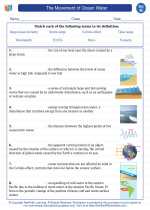Seas: Exploring Earth's Water Bodies
Seas are large bodies of saltwater that are connected to an ocean and are partially enclosed by land. They play a crucial role in the Earth's ecosystem and are home to a wide variety of marine life.
Formation of Seas
Seas are formed through a variety of geological processes, including the shifting of tectonic plates, the sinking of landmasses, and the rising of sea levels. They can also be created by the erosion of coastal land and the filling of ancient river valleys.
Types of Seas
There are several types of seas, including marginal seas (located along the edges of continents), inland seas (partially surrounded by land), and intercontinental seas (connecting different continents).
Importance of Seas
Seas play a critical role in regulating the Earth's climate, providing a habitat for marine organisms, and supporting various human activities such as fishing, transportation, and trade.
Challenges and Conservation
Seas face numerous threats, including pollution, overfishing, and climate change. Conservation efforts are crucial to protect the biodiversity and ecological balance of these vital water bodies.
Study Guide
- Define the term "sea" and explain its connection to the ocean.
- Describe the geological processes involved in the formation of seas.
- Identify and differentiate between the various types of seas.
- Discuss the ecological importance of seas and their impact on the Earth's climate.
- Examine the challenges facing seas and propose potential conservation measures.
By understanding the formation, types, importance, and conservation of seas, we can gain a deeper appreciation for these dynamic and essential water bodies.
[Seas] Related Worksheets and Study Guides:
.◂Science Worksheets and Study Guides Eighth Grade. The Movement of Ocean Water
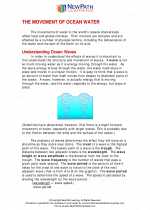
 Worksheet/Answer key
Worksheet/Answer key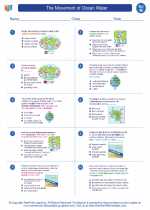
 Worksheet/Answer key
Worksheet/Answer key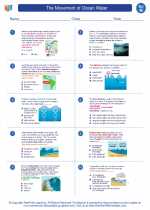
 Worksheet/Answer key
Worksheet/Answer key
 Vocabulary/Answer key
Vocabulary/Answer key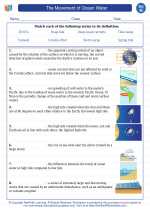
 Vocabulary/Answer key
Vocabulary/Answer key